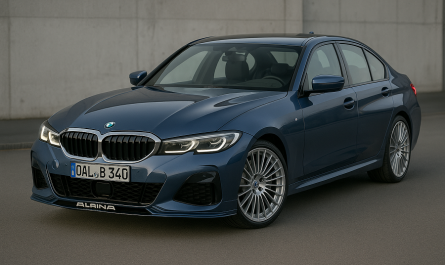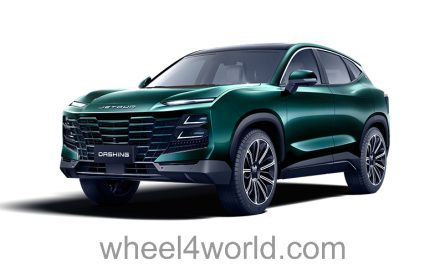MG Motors has introduced a fresh SUV that aims to stand between the compact Aster and the larger Hector. This new model, called the MG VS HEV, is designed to compete directly with the likes of the Maruti Suzuki Grand Vitara and the Toyota Urban Cruiser Hyryder. With modern styling, hybrid technology, and an impressive mileage claim of 24.4 kmpl, the MG VS HEV brings a new dimension to the hybrid SUV market in India. Let’s explore in detail how this SUV is built, how it looks, and what makes it stand out.

MG VS HEV Design and Dimensions
The MG VS HEV is based on a new platform, and the brand has focused on giving it a modern crossover appeal. At the front, the SUV carries MG’s new sporty logo finished in piano black, which looks much sleeker compared to the traditional chrome-heavy badges of the past. The front fascia has sharp LED headlamps, stylish DRLs, and a bold bumper design that gives it an electrified SUV look even though it is a hybrid.
From the side profile, the MG VS HEV looks longer than the Hyundai Creta and even the Toyota Hyryder. At 4370 mm, it is currently the longest SUV in its segment, which ensures more road presence. The panoramic sunroof adds a premium touch, while the 17-inch Yokohama tyres enhance grip and handling. However, MG has cut costs slightly by offering halogen indicators on the ORVMs instead of LEDs.
At the rear, the VS HEV carries hybrid badging, connected tail lamps, and a large MG logo. While some may find the rear design a little simple compared to rivals, it still maintains MG’s typical crossover appeal.
MG VS HEV vs Rivals – Dimensions
| Length (mm) | 4370 | 4330 | 4365 | 4345 |
| Width (mm) | 1809 | 1790 | 1795 | 1795 |
| Height (mm) | 1620 | 1635 | 1645 | 1645 |
| Wheelbase (mm) | 2570 | 2610 | 2600 | 2600 |
| Ground Clearance (mm) | 145 | 190 | 208 | 210 |
From the table, it’s clear that while the MG VS HEV is longer and wider, its ground clearance is lower compared to its rivals. This gives it more of a crossover stance than a rugged SUV posture.
MG VS HEV Interior and Features
Step inside the MG VS HEV and you’re greeted with a modern, premium-looking cabin. The dashboard features a dual-screen layout for infotainment and driver display, similar to what is seen in higher-end EVs. The use of piano black inserts, soft-touch materials, and blue highlights create a refreshing environment.
One of the highlights is the large panoramic sunroof, a feature that Indian customers love. The SUV offers six airbags, electronic parking brake, auto hold, traction control, and 360-degree camera. Wireless charging is present, though the space is a bit limited for larger phones.
The second-row seating offers good legroom and headroom, but the cabin does not feel as wide as it looks from outside. The boot space is slightly compromised due to the strong hybrid battery placement, making it less practical compared to the Hector or Hyryder.
MG VS HEV Hybrid Technology and Performance
The MG VS HEV runs on a 1.5L petrol engine paired with an electric motor. Together, they produce a combined 177 horsepower, which is higher than what Hyundai Creta or Kia Seltos turbo petrol engines deliver.
The engine on its own produces 109 hp and 142 Nm, while the electric motor generates 95 hp and 200 Nm. Being a parallel hybrid system, the SUV can switch between engine and motor depending on driving conditions. This allows the vehicle to maximize efficiency in city driving, where regenerative braking recharges the battery.
On highways, the advantage of the hybrid system is slightly less, as regeneration is minimal. Still, MG claims 24.4 kmpl, and in real-world conditions, the SUV should deliver around 18–19 kmpl—a big jump compared to MG Aster’s 10–15 kmpl.
MG VS HEV Engine and Hybrid Specs
| Petrol Engine | 1.5L, 109 hp, 142 Nm |
| Electric Motor | 95 hp, 200 Nm |
| Combined Power | 177 hp |
| Transmission | e-CVT |
| Mileage (Claimed) | 24.4 kmpl |
| Real-World Mileage | 18–19 kmpl (city) |
Driving Impressions and Comfort
The MG VS HEV feels smooth in city conditions thanks to its hybrid technology. The transitions between engine and motor are seamless, and the CVT gearbox makes it easy to drive in traffic. The SUV has a ground clearance of 145 mm, which is lower than rivals, so it is best suited for urban roads rather than off-road tracks.
The suspension is tuned for comfort, soaking up bumps easily, while the steering is light and responsive. On highways, the VS HEV feels stable, but enthusiasts may find the CVT gearbox a bit dull during aggressive acceleration.
Price and Market Position
Internationally, the MG VS HEV is priced around ₹22 lakh, while in China it can be sourced at around ₹18 lakh before taxes. If MG plans to launch it in India, it will directly rival the Toyota Hyryder and Maruti Grand Vitara Strong Hybrid. However, MG’s current focus is more on EVs like the MG4, which may delay the VS HEV’s India debut.
Final Verdict on MG VS HEV
The MG VS HEV is a stylish, modern, and fuel-efficient SUV that brings MG Motors’ hybrid expertise into play. It stands out with its long dimensions, premium features, and strong hybrid performance. However, its lower ground clearance and compact boot space may limit its appeal for customers looking for rugged practicality.
If launched in India, it could be an attractive option for those who want premium looks, advanced hybrid technology, and high mileage without the range anxiety of a pure EV.
FAQs About MG VS HEV
Q1. What is the mileage of MG VS HEV?
The MG VS HEV claims 24.4 kmpl, but in real driving it should return 18–19 kmpl in city conditions.
Q2. What engine does MG VS HEV use?
It uses a 1.5L petrol engine paired with an electric motor, producing a combined 177 hp.
Q3. Is MG VS HEV bigger than Hyundai Creta?
Yes, at 4370 mm length, it is longer than the Creta (4330 mm) and even the Hyryder.
Q4. Does MG VS HEV have a panoramic sunroof?
Yes, it comes with a large panoramic sunroof, one of its most attractive features.
Q5. Will MG VS HEV launch in India?
There is no official confirmation yet, as MG is focusing more on EVs, but if launched it will rival Toyota Hyryder and Maruti Grand Vitara.


